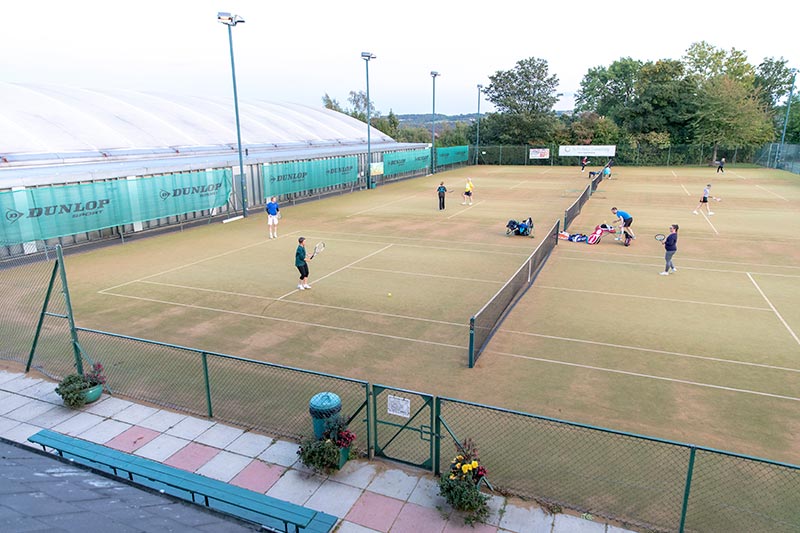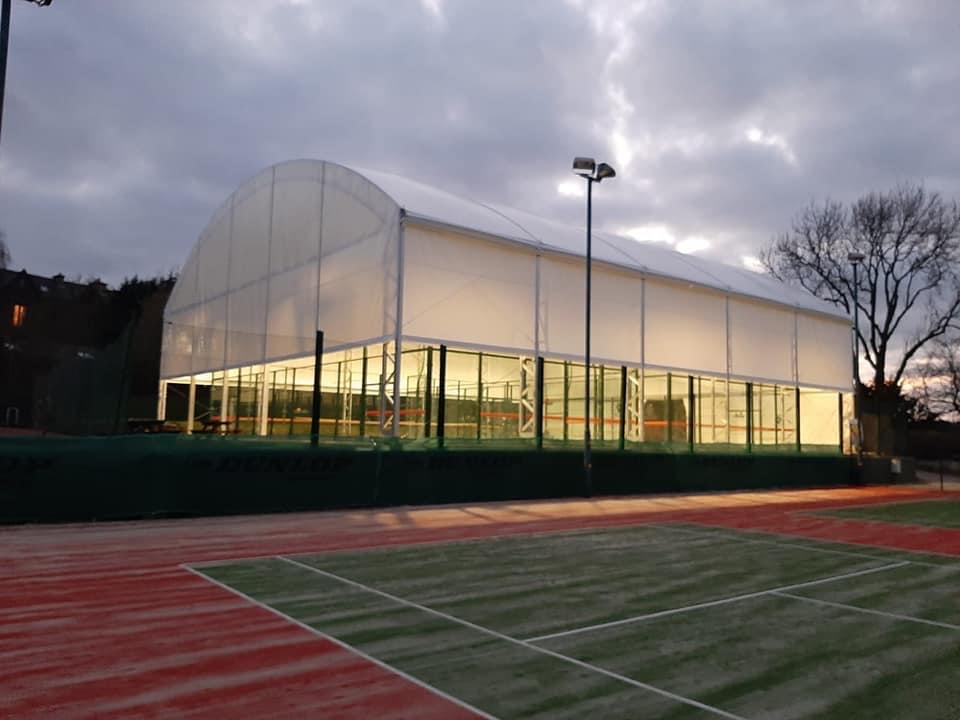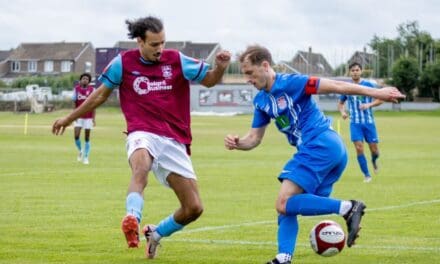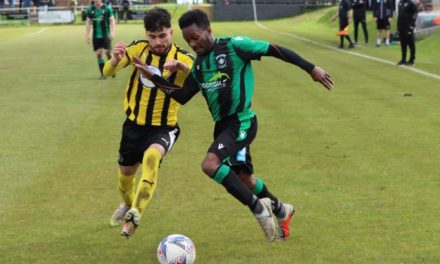By Peter Emsell, chairman of Huddersfield Lawn Tennis and Squash Club
Huddersfield Lawn Tennis and Squash Club is celebrating its 140th anniversary this year – and its history and development reflects that of the town as a whole.
The story begins in 1881 when the Wimbledon Men’s Championship took place on the outdoor grass courts at the All England Tennis and Croquet Club.
There was no ladies’ event and it was only the fifth year of the now world famous Wimbledon Championship. The defending champion John Hartley lost in straight sets, 6-0, 6-1 and 6-1. The defeat was said to be blamed on Hartley suffering an attack of English cholera.
1881 was the height of the Victorian era and the booming industrial revolution, with the textile and engineering industries providing the wealth to the region. Huddersfield was a real boom town in this period. A small group of enthusiasts began to play the relatively new game of ‘lawn tennis’ on a pocket of land off Halifax Road and opposite the recently opened Edgerton Cemetery.
Before this era, sport used to be a brutal, lawless affair frowned upon by the middle classes, but the Victorians changed all that. The Victorian period saw a drive towards a more civilised and controlled society with a strong work ethic. In sport this manifested itself by a desire for rules and regulations, changing the emphasis from manly physical pursuits to moral and spiritual exercises with disciplinary value and a spirit of fair play.
The predominant sports of the time were football, rugby, cricket, athletics and tennis. They were enjoyable, social affairs witnessed by the fact that many clubs, particularly football and cricket clubs, were sports favoured by the working classes. These sports were a welcome relief from the hard slog of manual labour and were based in pubs.
READ MORE: The amazing history of pub and hotel on Castle Hill
Middle class people favoured the sports of tennis and rugby and formed private membership clubs where they could socialise with like-minded people in the local community. Tennis was seen as one of the few sports where middle class women could also participate without losing their feminine poise.
Tennis clubs were also places where men and women could meet to court and flirt. In some cases this led to marriage, thus emphasising the appeal of sociability in sports clubs.
READ MORE: The history of women’s football in Huddersfield
Moreover wives, mothers and friends played important and supportive roles in helping to run the clubs: fundraising and events, making tea, washing up and doing the chores around the club in support of the men. Such was the role of women in middle class Victorian and Edwardian Britain.

As well as the sociability aspect of clubs and the social networks that were made available when joining as a member, clubs had other perceived benefits for men. Developing business and fostering professional relations were other important reasons for joining middle class clubs.
The area was where the wealthy and middle classes lived. Edgerton for the very rich then Birkby and Highfields for the middle classes. There was a strong sense of the ‘Community’ and social reformation in these times and the Masonic Lodge headquarters at Greenhead played an influential part in this and there is evidence of links between the ‘Lodge’ and HLTSC members who were local business families and commerce leaders.
By 1907 the Whitsuntide treat was normally held at the Tennis Club. Whit Monday was officially recognised as a bank holiday in the mills and factories of the UK in 1871 and as Huddersfield was known as a Northern factory to the World this bank holiday was a well respected holiday celebration.
Whitsuntide is a religious event, being the seventh week after Easter. It lost its status in 1972 when the fixed Spring Bank Holiday was created. It was tradition for children to have new clothes and dress up for the Whitsuntide treat and head to the tennis club for celebrations and games.

After the official formation of the club in 1881 this small group of tennis pioneers had formed the Huddersfield Lawn Tennis Club with 180 members, making it one of the oldest clubs in Yorkshire and 1884 marked the start of the club’s unbroken affiliation to the Yorkshire Lawn Tennis Association.
These deep-rooted origins shaped the sport for many decades to follow in the UK. Many say this social culture is still evident today in clubs and this is cited as a major reason for the barriers of success for the sport on the global stage in comparison to other countries that came to the sport at a much later time. The evidence cited being that Andy Murray has been the only significant world class tennis player to come from the UK for many years.
The grounds at HLTSC were steadily extended and after the Second World War in 1947 four new tennis courts were opened. The game of squash actually came before this and in the early 1900s a single wooden court was purchased from Chapel Allerton Tennis Club. Despite this it was only in 1947 that the first Squash Club Championships was held and won by a Mr E.A. Kaye.
The court was later sold onto Otley Tennis Club and shortly after the club was extended by two squash courts and then again by a further three courts in the 60s when the squash boom took off.
READ MORE: How Huddersfield Lawn Tennis and Squash Club became a hub for the growing sport of padel
With the West Yorkshire inclement weather it soon became inevitable that an indoor tennis court had to be a priority and the first single indoor court was built in the late 1970s and the two lower grass courts removed. The indoor court was a major success and in the later part of the 1980s the current facility with four courts was built. A gym was added in 2008 and officially opened by former British No1 Greg Rusedski. The gallery viewing area carries his name and can be seen on the entrance door if you look carefully.
In 2010 the first padel courts in the North of England were built. Eleven years later the game of padel has become one of the fastest growing sports in the world.

In line with its pioneering spirit HLTSC has now demolished and rebuilt the padel courts and introduced a covered canopy so the sport can be played all year round and in any weather the West Yorkshire climate can throw at it.
Huddersfield Lawn Tennis and Squash Club chairman Peter Emsell said: “The club is 140 years old and it just keeps growing. We have some unbelievably talented youngsters playing.
“With the new padel courts we have shown as a club how we can be a real hub sport in the town.”
The club has 600 members of all ages and continues to grow and thrive.



















